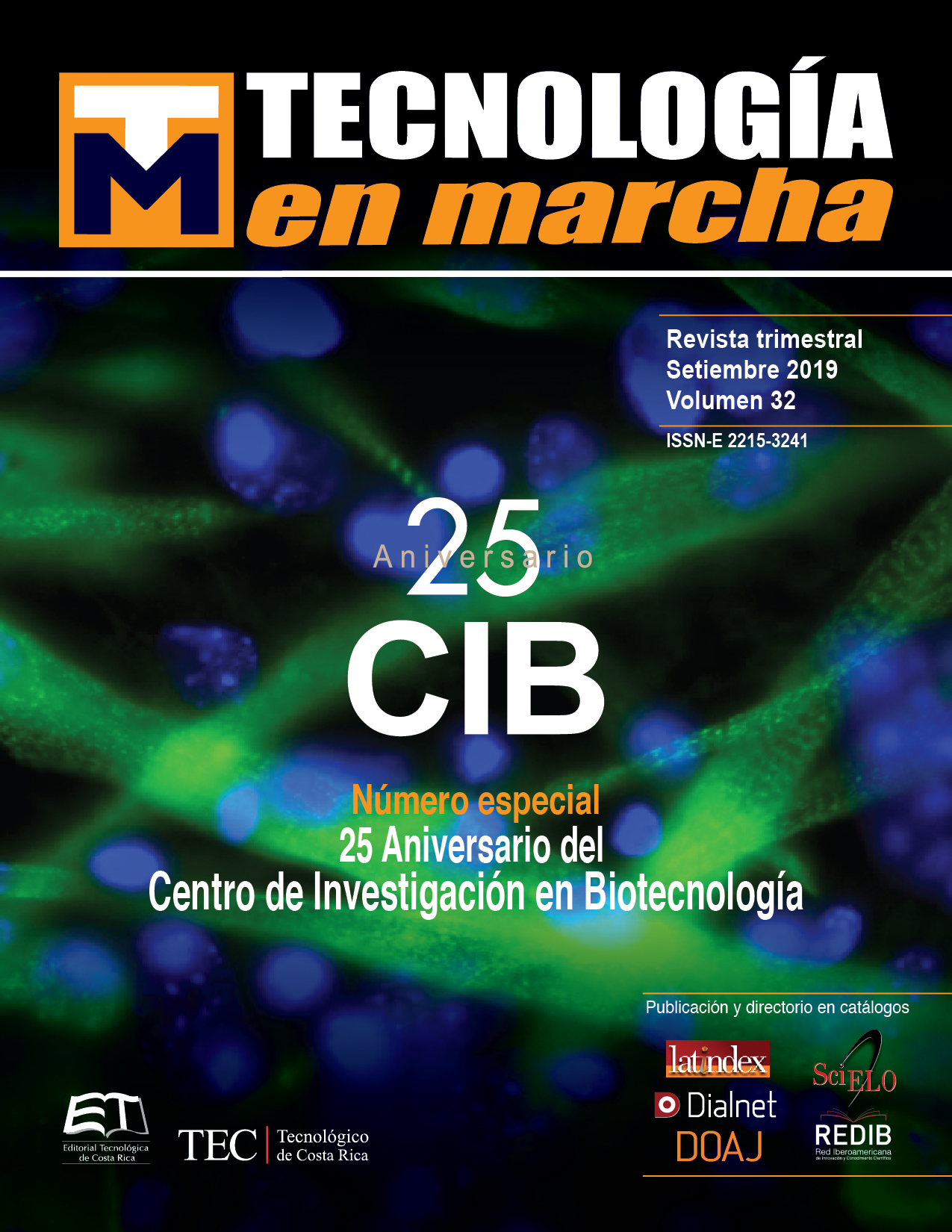Optimization of an in vitro culture protocol of Coyol embryos (Acrocomia aculeata)
Main Article Content
Abstract
Coyol (Acrocomia aculeata), is a palm distributed mainly in the Pacific Region of Costa Rica, its main use has been to obtain a drink known as coyol wine and the fruits as feed for livestock. In addition, it is a species that has great potential, because of the fruits and seeds you can obtain oil that can be used to produce biodiesel, food and cosmetics, among others.
There are few commercial plantations that exist in the world, however Brazil is one of the countries that is betting on planting this species in larger areas. One of the problems we have when working with this species is the high dormancy of its seeds and the low percentages of germination. For this reason, the objective of the work was the establishment and standardization of an in vitro germination protocol of coyol embryos (A. aculeata).
Fruits were collected from coyol plants (A. acuelata) located in different sites in the provinces of Guanacaste, Alajuela, San José and Puntarenas of Costa Rica, during 2018. The exocarp and mesocarp were separated and the endocarp was disinfected, subsequently embryos were extracted and seeded in different in vitro culture media. A disinfection and germination protocol was obtained.
Article Details
Los autores conservan los derechos de autor y ceden a la revista el derecho de la primera publicación y pueda editarlo, reproducirlo, distribuirlo, exhibirlo y comunicarlo en el país y en el extranjero mediante medios impresos y electrónicos. Asimismo, asumen el compromiso sobre cualquier litigio o reclamación relacionada con derechos de propiedad intelectual, exonerando de responsabilidad a la Editorial Tecnológica de Costa Rica. Además, se establece que los autores pueden realizar otros acuerdos contractuales independientes y adicionales para la distribución no exclusiva de la versión del artículo publicado en esta revista (p. ej., incluirlo en un repositorio institucional o publicarlo en un libro) siempre que indiquen claramente que el trabajo se publicó por primera vez en esta revista.

